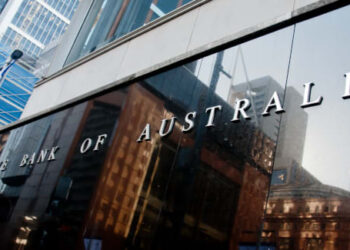According to projections by the Organisation for Economic Co-operation and Development (OECD), the Reserve Bank of Australia (RBA) will begin easing monetary policy in Q3 2024.
In its latest Economic Outlook published on Wednesday, the OECD predicted that the RBA will deliver a total of 75 basis points of interest rate cuts between Q3 2024 and the end of 2025, steadily taking the cash rate down to 3.60 per cent.
The OECD said the cash rate is expected to remain at its current “restrictive level” of 4.35 per cent “until inflation is clearly declining to the target band”.
While the RBA has forecast that inflation will only hit the top end of its 2–3 per cent target range by the end of 2025, the OECD instead expects that inflation will ease at a faster pace and fall to the top of the target band by early 2025.
“Inflation will moderate, aided by abating global inflationary pressures, though inflation of some services components is anticipated to remain elevated throughout 2024,” it noted.
A number of top economists also believe that inflation is tracking below the RBA’s latest forecasts after the monthly consumer price index (CPI) indicator from the Australian Bureau of Statistics (ABS) eased to 4.9 per cent in October, down from 5.6 per cent in September.
Speaking on ABC Radio on Thursday, Treasurer Jim Chalmers said that the OECD’s report and the ABS data showed “we are making some welcome progress in the fight against inflation and that will determine the future trajectory of interest rates”.
As part of its outlook, the OECD warned that more persistent inflationary pressures or a sharper-than-expected slowdown in China pose downside risks to Australia’s GDP growth.
Growth is projected by the OECD to slow from 1.9 per cent in 2023 to 1.4 per cent in 2024 before recovering to 2.1 per cent in 2025.
“Higher interest rates and cost-of-living pressures will damp spending by households with few accumulated savings and weigh on housing investment,” the OECD said.
“Continued strong working-age population growth and higher exports as foreign student arrivals further recover will partly offset these headwinds.”
As Australia’s GDP growth slows, the OECD also projected that the unemployment rate will rise moderately, from 3.5 per cent in October to 4.4 per cent by mid-2025.
Reacting to the OECD’s forecasts for Australia and the world more broadly, Dr Chalmers noted there is still uncertainty about how the next 12 or 18 months will play out.
“There’s a lot of uncertainty in China, around the world. We’ve got two conflicts – one in the Middle East, one in Europe. We’ve got uncertainty at home when it comes to the way that these interest rate rises are biting in our economy, so there’s still a lot of uncertainty,” he said.
OECD’s global outlook
Due to the effects of monetary policy tightening, weaker trade, and lower business and consumer confidence, the OECD said that global growth will remain modest moving forward.
The organisation has projected global GDP growth of 2.9 per cent in 2023, 2.7 per cent in 2024, and 3.0 per cent in 2025, with Asia accounting for the bulk of this growth.
“The global economy continues to confront the challenges of both low growth and elevated inflation, with a mild slowdown next year, mainly as a result of the necessary monetary policy tightening over the past two years,” said OECD secretary-general Mathias Cormann.
“Inflation has declined from last year’s peaks. We expect that inflation will be back at central bank targets by 2025 in most economies.”
The OECD expects that inflation will gradually ease towards the targets of central banks in most economies. Consumer price inflation in OECD countries is expected to decline from 7.0 per cent in 2023 to 5.2 per cent in 2024, and 3.8 per cent in 2025.
Looking ahead, risks to the near-term global outlook remain “tilted to the downside”, according to the organisation.
“Heightened geopolitical tensions due to the conflict following the terrorist attacks on Israel by Hamas are a key near-term concern, particularly if the conflict were to broaden,” the OECD said.
“This could result in significant disruptions to energy markets and major trade routes, and additional risk repricing in financial markets, that would slow growth and add to inflation.”
Additionally, the OECD warned that cost pressures, higher energy and food prices, or an upward drift in inflation expectations may drive central banks to keep policy rates higher for longer, which could potentially lead to additional stress in financial markets.
“Conversely, the impact of higher interest rates and tighter credit standards could prove stronger than anticipated, leading to a more severe slowdown in spending, rising unemployment, and higher bankruptcies,” it added.
However, the organisation assessed that the global economy and financial markets have proved “relatively resilient” to the tightening of monetary policy and noted that inflation may return to target without a significant growth slowdown or a sharp rise in unemployment.
RBA governor Michele Bullock recently stressed that while inflation needs to be brought under control, it needs to be done in a manner that does not trigger an unemployment spike.







